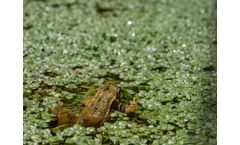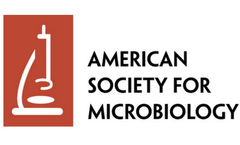Chlorella Articles & Analysis
14 articles found
The ocean is home to many microalgal species, including Chlorella vulgaris, which are highly efficient at producing oxygen. Among phytoplankton, Prochlorococcus, the smallest photosynthetic organism, produces the most oxygen in the ocean due to its abundance and ...
Algae (photosynthetic organisms) can be found in almost any aquatic environment, such as ponds on golf courses. Depending on the type and level of growth, golf course pond algae can be beneficial and challenging. Therefore, here are some critical points about golf course pond ...
A locally isolated microalga, Chlorella sp., was grown to determine the effect of temperature, aeration rate, and cultivation time on simultaneous biomass production and nutrient removal from piggery wastewater using central composite design (CCD). The most important variable for the biomass productivity of Chlorella sp. was aeration rate, while that for lipid ...
A novel anion exchange resin, quaternary ammonium–Chlorella vulgaris (QACV), was prepared by introducing quaternary ammonium groups onto dried Chlorella vulgaris as base material. ...
The growth, lipid accumulation and nutrient uptake characteristics of an oleaginous microalga Chlorella sp. HQ were evaluated at different initial pH from 5.0 to 11.0. ...
To assess the effects of leachates extracted from Cry1Ca‐expressing transgenic rice (T1C‐19) straw on the microalga Chlorella pyrenoidosa, we added purified Cry1Ca (10, 100, 1000 µg/L) and five concentrations of diluted extracts (5, 10, 20, 40, 80%) from T1C‐19 and the non‐transformed control strain MH63 into the medium of C. pyrenoidosa. ...
Chlorellais one of the few microalgae employed for human consumption. It typically has a high protein content, but it can also accumulate high amounts of lipids or carbohydrates under stress conditions and, for this reason, it is of interest in the production of biofuels. High production costs and energy consumption are associated with its cultivation. This work describes a strategy to reduce ...
The toxic effects of cadmium (Cd) on the green alga Chlorella vulgaris were investigated by following the response to Cd of various toxicity endpoints (cell growth, cell size, photochemical efficiency of PSII in the light or ФPSII, maximal photochemical efficiency or Fv/Fm, chlorophyll a fluorescence, esterase activity and cell viability). ...
To compare the toxic action of fluoride (F−) and chloride (Cl−) on freshwater algae, effects of F− and Cl− on Chlorella pyrenoidosa growth were investigated by determination of the algal biomass and model analysis. ...
The performance of this OPPBR was assessed using cultures of Chlorella vulgaris. Growth rates of biomass were compared in bioreactors operated separately using a V-cut OP, or a flat-plate OP both equipped with LEDs or a fluorescent light source without any OP. ...
In this study, the potential of the filamentous cyanobacterium, Oscillatoria okeni, and the green alga, Chlorella vulgaris, to remove nitrate-nitrogen from tilapia-pond effluent was assessed. ...
The nontarget effects, in terms of biochemical changes induced by p‐nitrophenol (PNP) in three soil microalgae, Chlorella sp., Chlorococcum sp., and Heterochlamydomonas sp., and the PNP removal efficiency of these isolates were determined. On exposure to 20 mg L–1 PNP, Chlorella sp. showed greater activity of peroxidase, superoxide dismutase, and glutathione ...
A pre-treatment procedure was developed that improved light transmittance for reject water from the FREVAR, Norway, wastewater treatment plant from 0.1% T to 77% T (670 nm, 1 cm path). Chlorella sp. microalgae were found to be suitable for growth in this pre-treated reject water. ...
This involves immobilizing a unicellular, freshwater microalga, a Chlorella species, serving as the plant, with a plant growth-promoting bacterium, an Azospirillum species, in small alginate beads to allow close interaction and to avoid external interference from bacterial contaminants. ...






